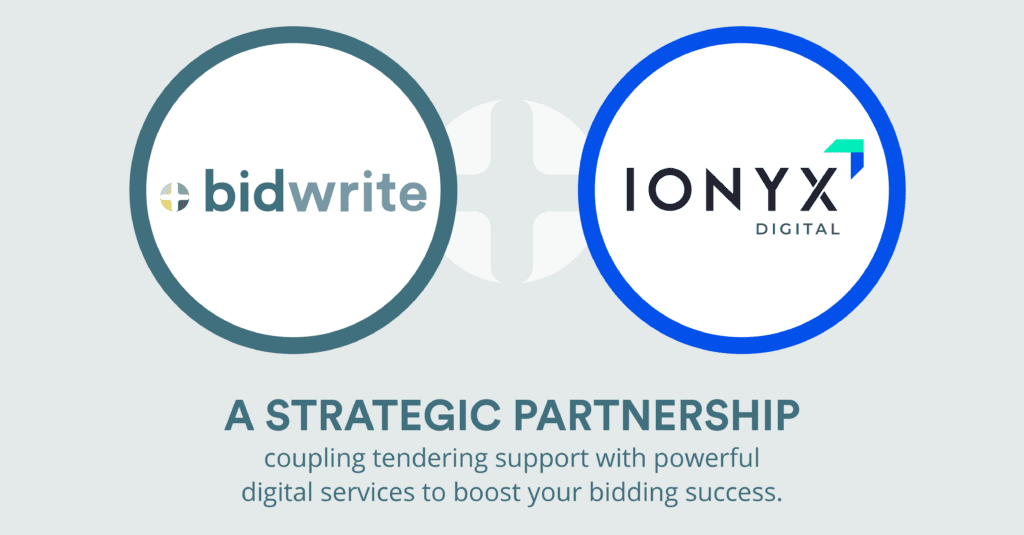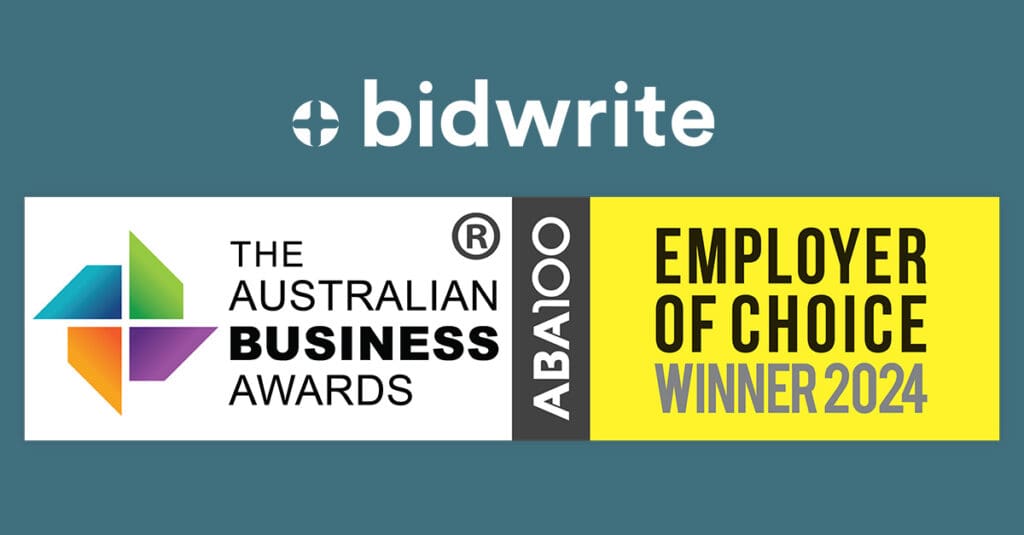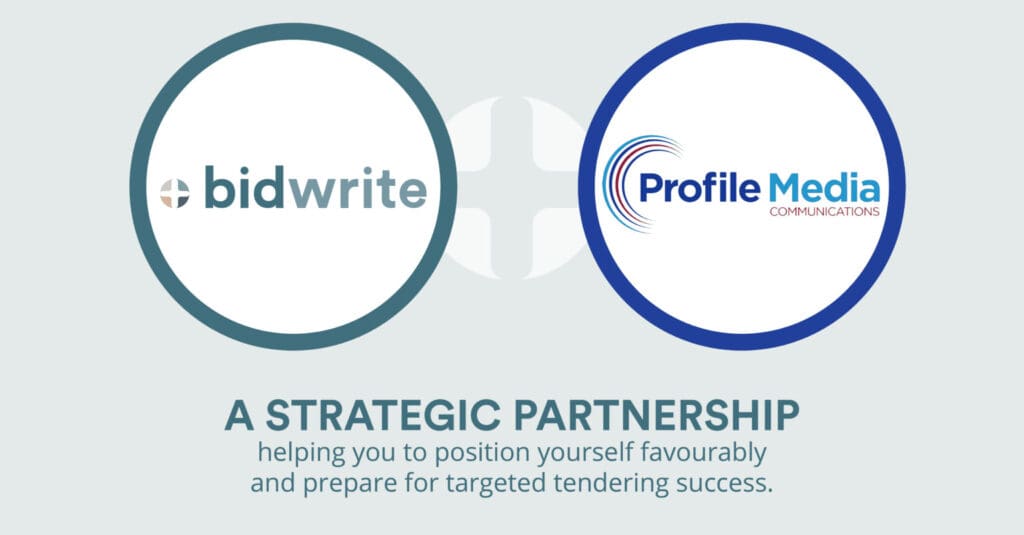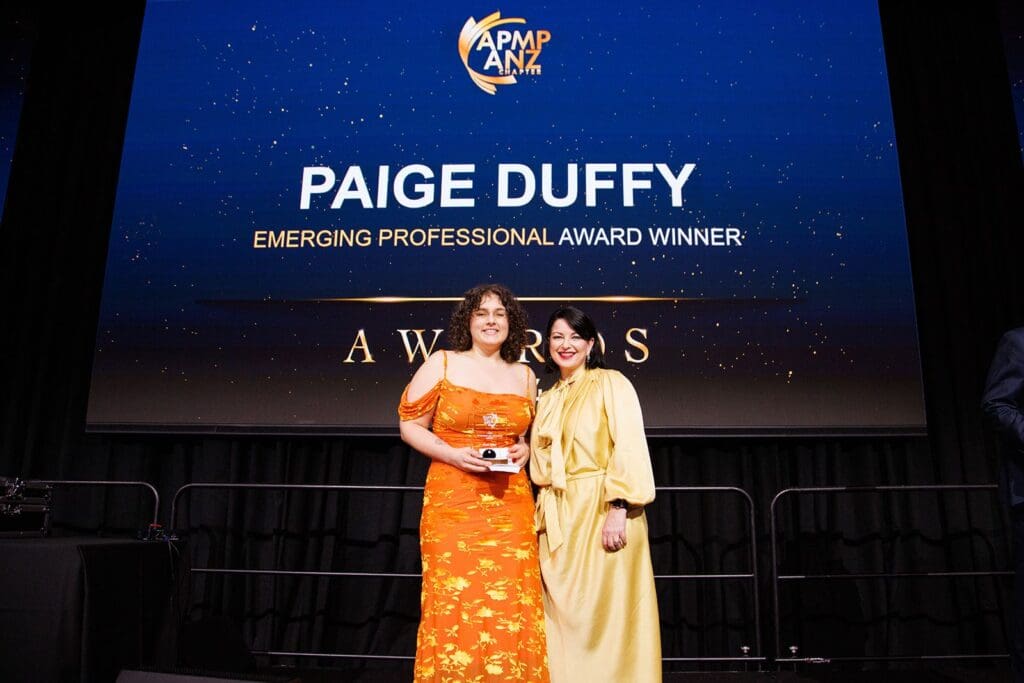Search our insights & articles
We’re delighted to announce that BidWrite’s GM – Growth Peter Blunden and Senior Consultant Nicole Coleman have both won APMP 40 Under 40 Awards for 2024. This globally-recognised achievement acknowledges their professional accomplishments and contributions to the bidding industry.
Prompted by Bidding Quarterly's 'All I Want For Christmas' theme for Issue 20, Nigel Dennis spells out what the BidWrite team would like to see wrapped up and placed under their professional Christmas tree every year – creating a blueprint for a high performing ‘bid sleighing’ team!
BidWrite is excited to announce a strategic partnership with IONYX Digital. Clients of both businesses seem to share three common strengths, but are often missing the fourth 'leg' to balance the metaphorical chair. And that's exactly where our complementary services can help.
We are incredibly proud to announce that BidWrite has been recognised as an Employer of Choice in the 2024 Australian Business Awards. This award acknowledges our effective policies and practices, employee recruitment, engagement and retention processes that that maximise the full potential of our workforce.
At first glance, public relations and tendering seem worlds apart. But if you scratch the surface, you’ll quickly see some shared traits. These translate into advice that works equally well for public relations and tendering alike.
BidWrite is excited to announce we’ve been shortlisted for two Australian AI Awards in 2024. Our AI-powered technology platform BidWriteGPT is a finalist in the AI Innovator - Media & Communication Services category, and our CEO Nigel Dennis is a finalist in the AI Leader of the Year – SME category.
Commercial terms are an aspect of bidding often overlooked by proposal professionals. Nigel Dennis explains a more effective approach to categorising and presenting commercial clarifications in tender submissions, to improve your chance of success.
Congratulations to BidWrite Bid Consultant Paige Duffy, winner of the 2024 APMP Emerging Professional Award. This award was presented at the 2024 APMP ANZ Chapter Conference in Brisbane, recognising Paige’s achievements and wider contributions to the proposal industry in this early stage of her career.
What is AI? By now I’m sure you’re well aware of all the hype about the ‘new and exciting developments’ in AI technology. But what is AI and why should you, a bidding professional, care? Artificial Intelligence (AI) is not as new as you might think. Although the term ‘Artificial Intelligence’ sounds like something straight
A free subscription to our latest newsletters, blogs, training dates and upcoming events, delivered straight to your email inbox.
Subscribe to Bid Talk
"*" indicates required fields











